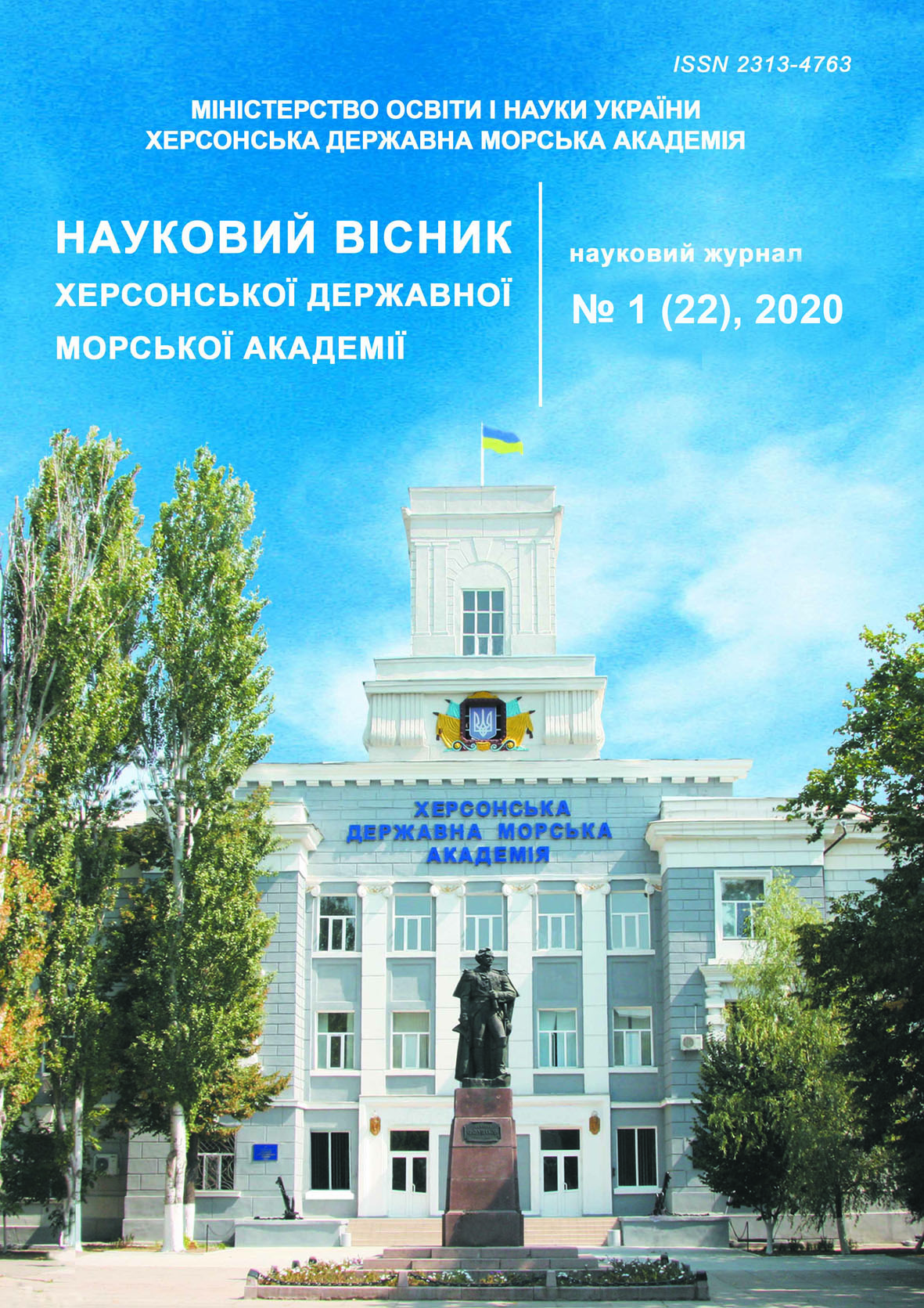MODIFIED EPOXY MATRIX FOR VEHICLE PROTECTION: ADHESIVE AND PHYSICAL-MECHANICAL PROPERTIES
10.33815/2313-4763.2020.1.22.163-174
Abstract
The significance of application of the polymer composite materials in current technologies has been proven, since they have been demonstrating high performance parameters, offering improved adhesion failure resistance, enhanced mechanical and thermophysical properties which as a consequence enables their application under both ambient and elevated temperatures.
The purpose of the current work is to investigate the influence of the phthalimide modifier on the adhesive and physico-mechanical properties of epoxy composite materials and protective coatings based on them.
The ED-20 epoxy diane oligomer has been taken as the main component for the binder in the formation of epoxy materials. Polyethylene polyamine hardener has been used for the crosslinking of epoxy compositions. Phthalimide has been taken as a modifier. The molecular formula of the modifier is: C8H5NO2. The molar mass of phthalimide is 147.13 g/mol.
It has been proven that with the introduction of the phthalimide modifier in the amount of 2.0 pts.wt. into 100 pts.wt. of ED-20 epoxy oligomer, the material which offers the following properties is being built up: adhesive failure resistance at breaking off - 47.7 MPa, residual stresses - 1.1 MPa. Compared to the parent epoxy matrix, these properties demonstrate an improvement of the adhesive failure resistance at breaking off by 1.9 times, and in addition to the above, the residual stresses are being reduced by 1.3 times. The composite obtained may be reasonably taken in the form of a matrix when building up an adhesive layer for protective coatings.
It has been experimentally proven that in order to build up the materials which would offer improved cohesive properties, it is necessary to use a composition of the following makeup: ED-20 epoxy oligomer (100 pts.wt.), polyethylene polyamine hardener (10 pts.wt.), phthalimide modifier (0.25 pts.wt.). Compared to the parent epoxy matrix, the formation of that kind of a material provides an improvement of the following indicators of physical and mechanical properties of composites: bending critical stresses - from 48.0 MPa to 62.1 MPa; impact value - from 7.4 kJ/m2 to 14.7 kJ/m2. Note that the elasticity coefficient of this material is being reduced compared to the parent epoxy matrix from 2.8 GPa to 2.2 GPa. The composite obtained may be reasonably taken in the form of a matrix when building up the surface layer for protective coatings.
References
2. Aslanov T. A., Memedli I. M., Ithenko I. Ya. [at el.]. (2005). Ehpoksidnihe oligomerih i termostoyjkie pokrihtiya na ikh osnove. Plasticheskie massih, 6. 25–27.
3. Ayatollahi M., Alishahi E., Doagou-R S., Shadlou S., Ayatollahi M. R. (2012). Tribological and mechanical properties of low content nanodiamond. Epoxy nanocomposites. Composites, Part B: Engineering.Vol. 43, 8. 3425-3430.
4. Jana S., Sui G., Zhong W. (2009). Mehanisms for the Improvement in Interfacial Adhesion Between UHMWPE Reinforcement and Nano-epoxy Resins with Reactive Graphitic Nanofibers. Journal of Adhesion Science and Tehnology. V.23, N 9. 1281–1292.
5. Mikhayjlin Yu. A. (2009). Specialjnihe polimernihe kompozicionnihe materialih. Sankt-Peterburg : Nauchnihe osnovih i tekhnologii.
6. Buketov A. V. Syzonenko O. M., Bezbakh O. M., Buketova N. M. & Lypian Ye. V. (2019). Doslidzhennia vplyvu syntezovanoi vysokovoltnym elektrorozriadom poroshkovoi shykhty na teplofizychni vlastyvosti epoksydnykh kompozytiv dlia remontu suden. Naukovyi visnyk Khersonskoi derzhavnoi morskoi akademii. 2 (21). 142–153.
7. Buketov A. V., Syzonenko O. M., Nehrutsa R. Yu., Lypian Ye. V., Torpakov A. S. & Buketova N. M. (2019). Doslidzhennia teplofizychnykh vlastyvostei epoksykompozytiv, napovnenykh syntezovanoiu poroshkovoiu tytano-aliuminiievoiu shykhtoiu. Visnyk KhNTU. 3 (70). 22–29.
8. Buketov A. V., Bezbakh O. M., Kruhlyi D. H., Buketova N. M. & Yatsiuk V. M. (2019). Doslidzhennia teplofizychnykh vlastyvostei modyfikovanykh 4,4-metylenbis (2-metoksyanilinom) epoksydnykh kompozytiv dlia transportnoi haluzi. Naukovi notatky. Lutsk : LNTU. Vol. 66. 23–29.
9. Buketov A. V., Brailo M. V., Kobelnyk O. S., Yakushchenko S. V. & Sapronova A. V. (2019). Rozroblennia epoksy-poliefirnoi matrytsi z polipshenymy fizyko-mekhanichnymy vlastyvostiamy dlia vidnovlennia zasobiv transportu. Naukovi notatky. Lutsk : LNTU. Vol. 66. 30–36.
10. Buketov A. V., Kulinich V. H., Smetankin S. A., Buketova N. M. & Yatsiuk V. M. (2019). Vplyv modyfikatoriv C13H12CL2N2TA C13H14N2 na mekhanichni vlastyvosti epoksydnoi matrytsi. Naukovi notatky. Lutsk : LNTU. Vol. 66. 37–45.
11. Stukhliak P. D., Buketov A. V. & Redko O. I. (2011). Epoksydno-dianovi kompozyty: tekhnolohiia formuvannia, fizyko-mekhanichni i teplofizychni vlastyvosti : monohrafiia. Ternopil : Krok.
12. Buketov A. V., Stukhliak P. D., Levytskyi V. V. & Dolhov M. A. (2004). Doslidzhennia epoksykompozytiv, shcho mistiat modyfikovani olihomeramy napovniuvachi. Visnyk TDTU. 2. 52–59.
13. Buketov A. V., Stukhliak P. D. & Dolhov M. A. (2004). Doslidzhennia povedinky epoksykompozytnykh pokryttiv v umovakh napruzheno-deformovanoho stanu pislia yikh UF-oprominennia i mahnitnoi obrobky. Visnyk TDTU. 4. 36–45.
14. Ftalymyd. Vikipediia (veb-sait). URL : https://ru.wikipedia.org/wiki/%D0%A4%D1%82%D0%B0%D0%BB%D0%B8%D0%BC%D0%B8%D0%B4
15. Koryakina M. I. (1988). Ispihtanie lakokrasochnihkh materialov i pokrihtiyj. Moskva : Khimiya.






